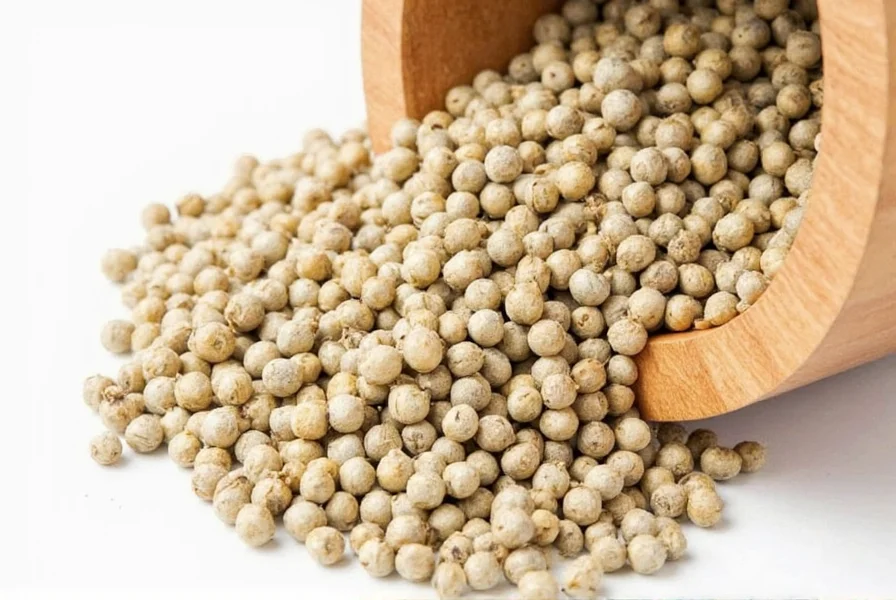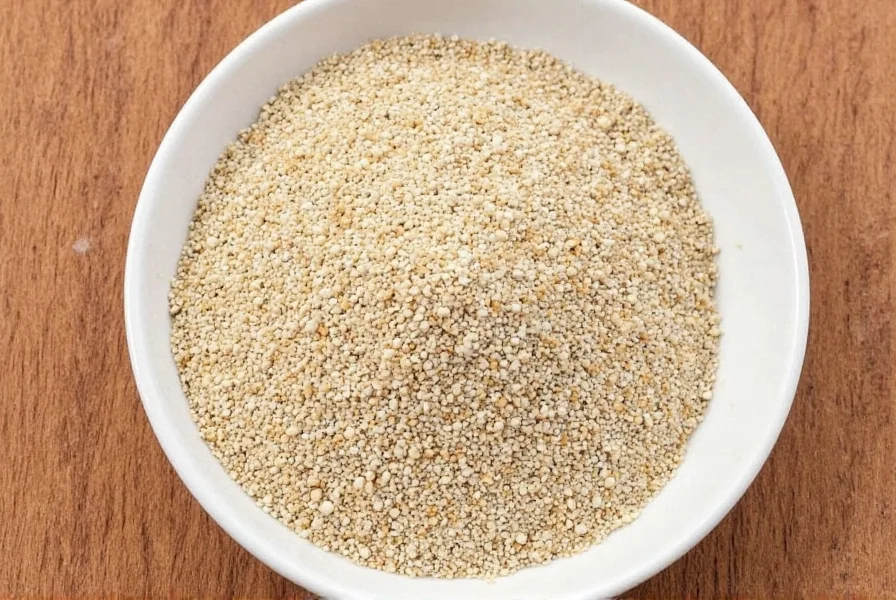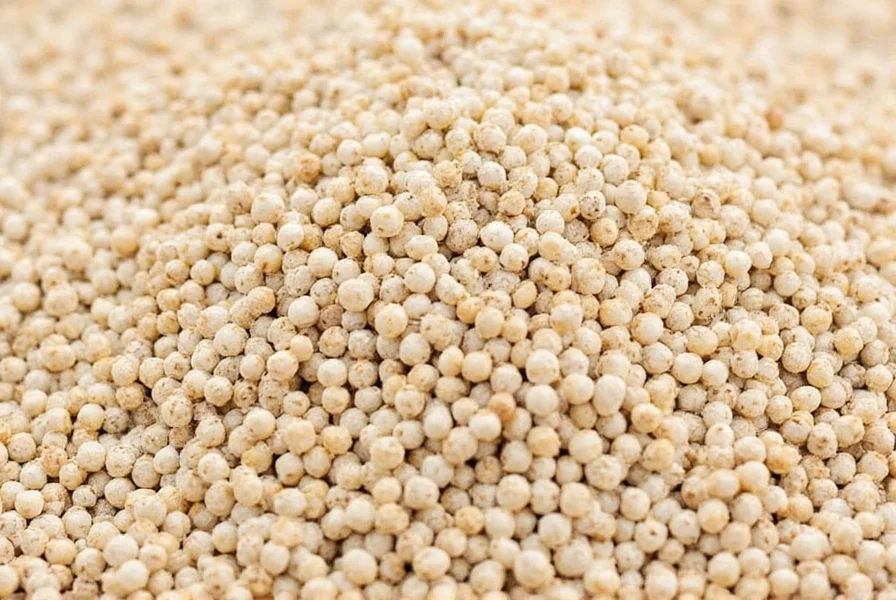Understanding the unique characteristics of white ground pepper helps elevate your culinary creations. Unlike its more common counterpart, white pepper undergoes a different processing method that significantly alters both appearance and flavor profile. This subtle spice has been a chef's secret for centuries, particularly valuable in French and Chinese cuisines where visual presentation matters as much as taste.
What Exactly Is White Ground Pepper?
White ground pepper comes from the same Piper nigrum plant as black pepper, but with a crucial difference in processing. While black peppercorns are dried with their outer fruit layer intact, white peppercorns have this layer removed through a process called retting. Producers soak fully ripe peppercorns in water for about a week, allowing natural enzymes to break down the outer layer, which is then rubbed off to reveal the pale inner seed.
This processing method creates distinct chemical changes. The removal of the outer layer eliminates certain compounds found in black pepper, resulting in a different flavor profile. White pepper contains higher levels of certain volatile compounds that give it that characteristic earthy, slightly fermented note many chefs appreciate.

White Pepper vs. Black Pepper: Key Differences
Understanding the differences between these two pepper varieties helps you make informed choices in your cooking:
| Characteristic | White Ground Pepper | Black Ground Pepper |
|---|---|---|
| Processing Method | Ripe berries soaked to remove outer layer | Unripe berries dried with outer layer intact |
| Flavor Profile | Milder, earthier, slightly fermented | Bolder, sharper, more complex heat |
| Heat Level | Moderate (6,000-10,000 SHU) | Higher (10,000-20,000 SHU) |
| Best Culinary Uses | Light-colored dishes, creamy sauces, mashed potatoes | Most savory dishes, marinades, rubs |
| Visual Impact | No visible specks | Distinct black specks |
When to Choose White Ground Pepper in Your Cooking
Professional chefs select white ground pepper primarily for aesthetic reasons in specific dishes, but its unique flavor profile also serves culinary purposes. The most common applications include:
- Cream-based sauces - Béchamel, Alfredo, and other white sauces where black specks would be visually disruptive
- Light-colored soups - Consommés and cream soups where presentation matters
- Seafood dishes - Particularly in delicate preparations like sole meunière
- Mayonnaise-based preparations - Aioli, tartar sauce, and salad dressings
- Traditional Chinese cuisine - Many authentic recipes specifically call for white pepper
- Light-colored meat dishes - Chicken piccata and veal preparations
Interestingly, white pepper's flavor profile works particularly well with certain ingredients. It complements dairy products beautifully and enhances the natural sweetness of shellfish. In Chinese cooking, white pepper often appears in wonton fillings and hot and sour soup for its distinctive warmth without visual distraction.
Proper Storage and Quality Assessment
To maintain the flavor of white ground pepper, proper storage is essential. Unlike black pepper, white pepper's milder flavor can dissipate more quickly if not stored correctly. Keep these guidelines in mind:
- Store in an airtight container away from light and heat
- Buy whole white peppercorns and grind as needed for maximum flavor
- Use within 6 months for optimal flavor (ground pepper loses potency faster)
- Check for a clean, earthy aroma without mustiness
- High-quality white pepper should have a consistent pale color without dark spots
When evaluating quality, look for products labeled "Tellicherry" or "Muntok," which indicate specific growing regions known for superior white pepper. Vietnamese and Indonesian white peppers also have excellent reputations among culinary professionals seeking authentic white ground pepper for cooking applications.

Substituting White Pepper Effectively
Running out of white ground pepper doesn't have to ruin your recipe. Understanding proper substitutions can save your dish while maintaining visual integrity:
- For visual purposes only: Cayenne pepper (use sparingly) or finely ground pale paprika can provide colorless heat
- For flavor approximation: A combination of black pepper and a pinch of cayenne can mimic white pepper's warmth
- Best overall substitute: Lightly toasted and ground black peppercorns (the toasting mellows the sharpness)
- For Chinese cuisine: Sichuan white pepper (different plant, but traditional in some regional dishes)
Remember that no substitute perfectly replicates white pepper's unique flavor profile. When substituting in recipes specifically designed for white pepper, adjust quantities carefully and taste frequently. The distinctive earthiness of authentic white ground pepper in cooking remains difficult to replicate exactly.
Common Questions About White Ground Pepper
Why do some recipes specifically call for white pepper instead of black?
Recipes specify white pepper primarily for visual reasons in light-colored dishes where black specks would be undesirable. Additionally, white pepper offers a different flavor profile—more earthy and less citrusy than black pepper—that works better in certain culinary traditions, particularly French and Chinese cuisines. The choice often comes down to both aesthetics and the specific flavor contribution needed for the dish.
Is white pepper healthier than black pepper?
Both white and black pepper offer similar nutritional profiles since they come from the same plant. The main difference lies in processing, not nutritional value. Black pepper contains slightly more piperine (the compound responsible for pepper's heat and potential health benefits) because it retains the outer layer where this compound is more concentrated. Neither is significantly healthier than the other when used in typical culinary amounts.
Can I use white pepper in everything that calls for black pepper?
While you can technically substitute white pepper for black pepper in most recipes, the flavor profile differs significantly. White pepper has a milder, earthier taste without the citrus notes of black pepper. In robust dishes like stews or grilled meats, black pepper usually provides better flavor complexity. White pepper shines in delicate dishes where its unique characteristics enhance rather than compete with other flavors. Consider the specific dish and desired flavor outcome when making substitutions.
Does white ground pepper have the same heat level as black pepper?
White pepper generally has a slightly lower heat level than black pepper. On the Scoville scale, white pepper measures around 6,000-10,000 units compared to black pepper's 10,000-20,000 units. However, the heat perception differs—white pepper's warmth feels more direct and frontal in the mouth, while black pepper's heat has more complexity with citrus and floral notes. Many people find white pepper's heat more consistent but less nuanced than black pepper's.
Why does white pepper sometimes have a slightly fermented smell?
The characteristic slight fermented aroma of white pepper comes from the retting process, where fully ripe peppercorns soak in water for about a week. This natural enzymatic process breaks down the outer fruit layer but also creates certain compounds that contribute to white pepper's distinctive earthy, almost musty note. High-quality white pepper should have a clean, earthy fragrance without excessive mustiness, which would indicate improper processing or storage.











 浙公网安备
33010002000092号
浙公网安备
33010002000092号 浙B2-20120091-4
浙B2-20120091-4